
Nikon 60/2.8 AF macro lens
by Philip Greenspun; revised March 2011
Site Home : Photography : Nikon 60/2.8 AF macro lens

by Philip Greenspun; revised March 2011
Site Home : Photography : Nikon 60/2.8 AF macro lens
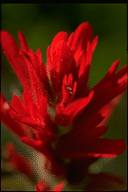 Nikon calls their
macro lenses "micro-Nikkors". This is a bit odd considering that they focus
only down to 1:1 (still in the macro range) and that they are anything but micro in
size. The series includes a 60, a 105, and a 200. My favorite lens is the 60.
That's because I always carried an 80-200 with my Nikon and it was nice to have a
lens that didn't duplicate one of those focal lengths.
Nikon calls their
macro lenses "micro-Nikkors". This is a bit odd considering that they focus
only down to 1:1 (still in the macro range) and that they are anything but micro in
size. The series includes a 60, a 105, and a 200. My favorite lens is the 60.
That's because I always carried an 80-200 with my Nikon and it was nice to have a
lens that didn't duplicate one of those focal lengths.
How close is 1:1? That means that you are filling the 35mm frame with an object the same size as a 35mm frame, i.e., 24x36mm. With the 60mm lens, you are 8.75 inches from your subject at this reproduction ratio. The 105 gives you 12 inches of working distance and the 200 gives you 19.4. The larger lenses also provide traditional telephoto perspective flattening compared to the 60.
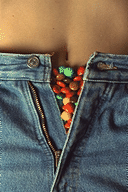 A lens designed for 1:1 is not
going to take good pictures focussed at infinity. Nikon solves this problem by
incorporating a floating element that changes the optical design of the lens as
the focusing ring is turned (Nikon calls this "Close-Range Correction"). [The 105
also has a floating element, but the 200 does not, presumably because it doesn't
need it -- telephoto lenses naturally make good macro lenses.]
A lens designed for 1:1 is not
going to take good pictures focussed at infinity. Nikon solves this problem by
incorporating a floating element that changes the optical design of the lens as
the focusing ring is turned (Nikon calls this "Close-Range Correction"). [The 105
also has a floating element, but the 200 does not, presumably because it doesn't
need it -- telephoto lenses naturally make good macro lenses.]
Can you use this as your everyday normal lens? Absolutely. Most professionals do. The Nikon macro lenses are always at least as sharp as the standard Nikon 50 lenses. There is a substantial weight and size penalty, though. The 60/2.8 macro is three times the weight and size of the 50/1.8 AF (16 oz. versus 5.5).
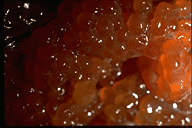 A wide
rubberized manual focus ring makes it easy to use this lens with older Nikon
bodies. The lens also has a AF/MF switch to allow faster focus mode changes with
Nikon AF bodies (now that I've switch to Canon EOS, though I can tell you that
there is no substitute for the
simultaneous
AF/MF that you get with the EOS-5 and the USM lenses).
A wide
rubberized manual focus ring makes it easy to use this lens with older Nikon
bodies. The lens also has a AF/MF switch to allow faster focus mode changes with
Nikon AF bodies (now that I've switch to Canon EOS, though I can tell you that
there is no substitute for the
simultaneous
AF/MF that you get with the EOS-5 and the USM lenses).
On thing that Canon hasn't learned how to do is display the effective aperture in the body's LCD. In the Nikon system, you set aperture on the lens. Suppose you want a lot of depth of field so you set f/32. You know that f/32 on a 60mm lens is not going to be super high quality because of diffraction (the lens is starting to act like a pinhole camera; pinhole cameras are not sharp). But you think it is worth it. Then you start to focus close. Out to 1:1. If you had your copy of the Kodak Professional Photoguide with you, you'd realize that the lens was now functioning at f/64 for both exposure and diffraction purposes. So your picture would be two f-stops underexposed and incredibly unsharp.
[If you are confused about the underexposure part, think about the fact that as the lens gets farther away from the body, it is casting a larger and larger circle of light. The fixed 24x36mm frame is intercepting a smaller and smaller fraction of that light, hence the loss of effective aperture for exposure purposes. If you are confused about the diffraction sharpness loss, I refer you to all the physics textbooks that I read and didn't understand at MIT.]
Anyway, if you didn't have your Kodak guide and were using a Canon EOS body or a Nikon F4, you'd be screwed. If you were metering through the lens, you might get proper exposure, but you'd never enlarge to 8x10 without embarrassment. [Ansel Adams took a lot of great pictures at f/64 and smaller. But he was using long lenses so the actual opening of the aperture was pretty good sized. And he was using an 8x10 view camera so he didn't have to enlarge very much.]
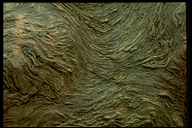 Some tree bark in the
Hoh Rainforest. Tripod, ballhead, Velvia,
f/16 indicated aperture. Note that I screwed up and didn't get enough depth of
field. It should have been f/22 or even f/32 so that the pattern of the bark was
more abstract. I would have bracketed the aperture except that (1) I was being
bitten to death by mosquitoes because I was a pinhead and forgot the insect
repellant; (2) I was with a friend, which makes for more pleasant traveling but
worse pictures. I ended up cropping it square for framing.
Some tree bark in the
Hoh Rainforest. Tripod, ballhead, Velvia,
f/16 indicated aperture. Note that I screwed up and didn't get enough depth of
field. It should have been f/22 or even f/32 so that the pattern of the bark was
more abstract. I would have bracketed the aperture except that (1) I was being
bitten to death by mosquitoes because I was a pinhead and forgot the insect
repellant; (2) I was with a friend, which makes for more pleasant traveling but
worse pictures. I ended up cropping it square for framing.
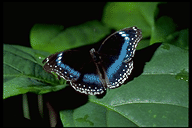 This is an example of when you'd want a
longer macro lens. Insects have a "fear circle". If you poke your lens into the
fear circle, they move. A 200 lets you get a closeup without intruding. Here, I'm
in a butterfly sanctuary
with an SB-24 and SC-17 off-camera flash cord (essential).
This is an example of when you'd want a
longer macro lens. Insects have a "fear circle". If you poke your lens into the
fear circle, they move. A 200 lets you get a closeup without intruding. Here, I'm
in a butterfly sanctuary
with an SB-24 and SC-17 off-camera flash cord (essential).
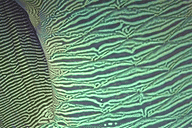 I put my N8008,
60 macro, and SB-24 flash in an EWA-marine plastic bag, jumped off a boat and
took this picture of the side of a fish. It is all in the
Australia part of my New Zealand story.
I put my N8008,
60 macro, and SB-24 flash in an EWA-marine plastic bag, jumped off a boat and
took this picture of the side of a fish. It is all in the
Australia part of my New Zealand story.
Text and pictures
copyright 1991-1995 Philip
Greenspun.
Top photo from
Travels with Samantha,
Chapter II. Red flower at right from
Travels with Samantha, Chapter VI. Salmon roe
from
Travels with Samantha, Chapter
XII.